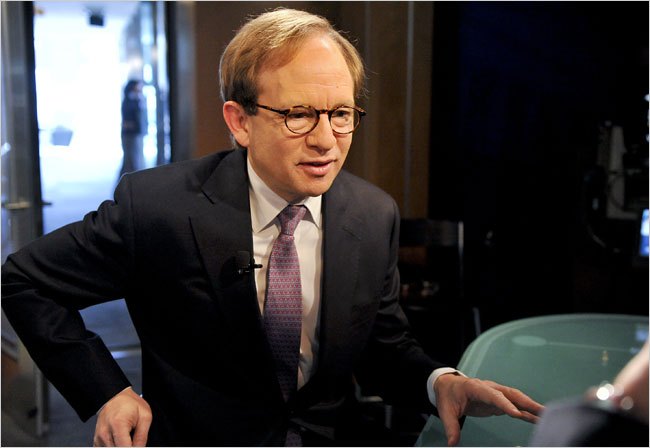Rattner On His Detroit Adventure
Former head of the Presidential Task Force on the Auto Industry, Steve Rattner has penned a retrospective for Fortune on his time guiding the auto industry bailout. He covers everything from how he assembled his team and developed a strategy to the decision to fire Rick Wagoner and the showdown with Chrysler’s creditors. There are no real surprises if you’ve followed TTAC for the last year or so, but it’s fascinating stuff to read coming from the horses mouth. Take Rattner’s initial impressions of the GM “culture thing”:
Everyone knew Detroit’s reputation for insular, slow-moving cultures. Even by that low standard, I was shocked by the stunningly poor management that we found, particularly at GM, where we encountered, among other things, perhaps the weakest finance operation any of us had ever seen in a major company.
For example, under the previous administration’s loan agreements, Treasury was to approve every GM transaction of more than $100 million that was outside of the normal course. From my first day at Treasury, PowerPoint decks would arrive from GM (we quickly concluded that no decision seemed to be made at GM without one) requesting approvals. We were appalled by the absence of sound analysis provided to justify these expenditures.
Rattner also recalls that the Chrysler bailout was far less of a sure thing:
Austan Goolsbee, a fearless former University of Chicago economist who had been with Obama since the beginning of his campaign, led the charge against Chrysler, marshaling strong factual arguments. One was that letting Chrysler go would give a needed boost to GM (and also to Ford), since most buyers of Chrysler’s strongest products — trucks, minivans, and Jeeps — probably would turn instead to the other Detroit automakers.
Harry maintained that a Chrysler liquidation could potentially add billions of dollars a year to GM’s operating income in a normal sales environment, vastly increasing the value of the company.
The group was torn (at one point the vote was four to four) and so were Tim, Larry, and I. We intuited that from a theoretical point of view, the correct decision could well be to let Chrysler go. But this was not an academic exercise…. We did not believe we could underwrite its viability without a strong corporate partner, so we turned our attention to that single possibility, an overture from Fiat.
And, at the risk of reprinting a full quarter of the piece, here’s Rattner’s recollection of canning of Rick Wagoner:
I don’t know whether Rick had any inkling of why I had wanted to see him alone. His face was impassive as I said, “In our last meeting, you very graciously offered to step aside if it would be helpful, and unfortunately, our conclusion is that it would be best if you did that.”
I told him of our intention to make Fritz acting CEO and he supported that idea, cautioning me against bringing in an outsider to run the company. “Alan Mulally called me with questions every day for two weeks after he got to Ford,” he said.
As we continued our rather awkward conversation, Rick suddenly asked, “Are you going to fire Ron Gettelfinger too?” Startled by the reference to the UAW head, I replied, “I’m not in charge of firing Ron Gettelfinger,” and Rick soon left to brief his board on our decision.
Later, I spoke to Fritz, who expressed enthusiasm for his proposed promotion but asked that he not be called “interim” CEO. “You can fire me anytime you want, but at least give me a better chance to succeed,” he said. We agreed.
Read the whole thing. [Hat Tip: 97escort]
More by Edward Niedermeyer
Latest Car Reviews
Read moreLatest Product Reviews
Read moreRecent Comments
- Jeff I do think this is a good thing. Teaching salespeople how to interact with the customer and teaching them some of the features and technical stuff of the vehicles is important.
- MKizzy If Tesla stops maintaining and expanding the Superchargers at current levels, imagine the chaos as more EV owners with high expectations visit crowded and no longer reliable Superchargers.It feels like at this point, Musk is nearly bored enough with Tesla and EVs in general to literally take his ball and going home.
- Incog99 I bought a brand new 4 on the floor 240SX coupe in 1989 in pearl green. I drove it almost 200k miles, put in a killer sound system and never wish I sold it. I graduated to an Infiniti Q45 next and that tank was amazing.
- CanadaCraig As an aside... you are so incredibly vulnerable as you're sitting there WAITING for you EV to charge. It freaks me out.
- Wjtinfwb My local Ford dealer would be better served if the entire facility was AI. At least AI won't be openly hostile and confrontational to your basic requests when making or servicing you 50k plus investment and maybe would return a phone call or two.


































Comments
Join the conversation
@ Ronnie Schreiber I disagree with your comment "Rattner is making a distinction between doing so based on ideological vs practical reasons, but saying that labor is more important than invested capital is indeed taking an ideological stance." Consider it from Rattner's point of view: the government could provide capital, but not workers or suppliers - and the main point of the whole exercise was to keep peaple employed and suppliers from failing. Insisting on keeping the traditional capitol rank order would have been an ideological decision, doing what was necessary for the government funded bankruptcy to achieve its goals was a pragmatic one.